Insect Pest Management
Coconut
I. Coconut black headed caterpillar
The caterpillar lives on the lower surface of leaflets in galleries made of excreta and silken web and feeds on the chlorophyll containing parenchymatous tissues . Dried up patches appearing on the upper epidermis of leaves and presence of larval galleries and pupal cases on the lower surface of the leaves are the major symptoms of infestation. In severe cases the whole plantation presents a burnt appearance due to the drying of leaves/leaflets with only the upper epidermis intact or in cases of old infestation leaves remain with midrib of the leaflet only. When palms are severely damaged, the attacked leaves droop, bunches buckle and the immature nuts shed heavily.
| Image 1 | 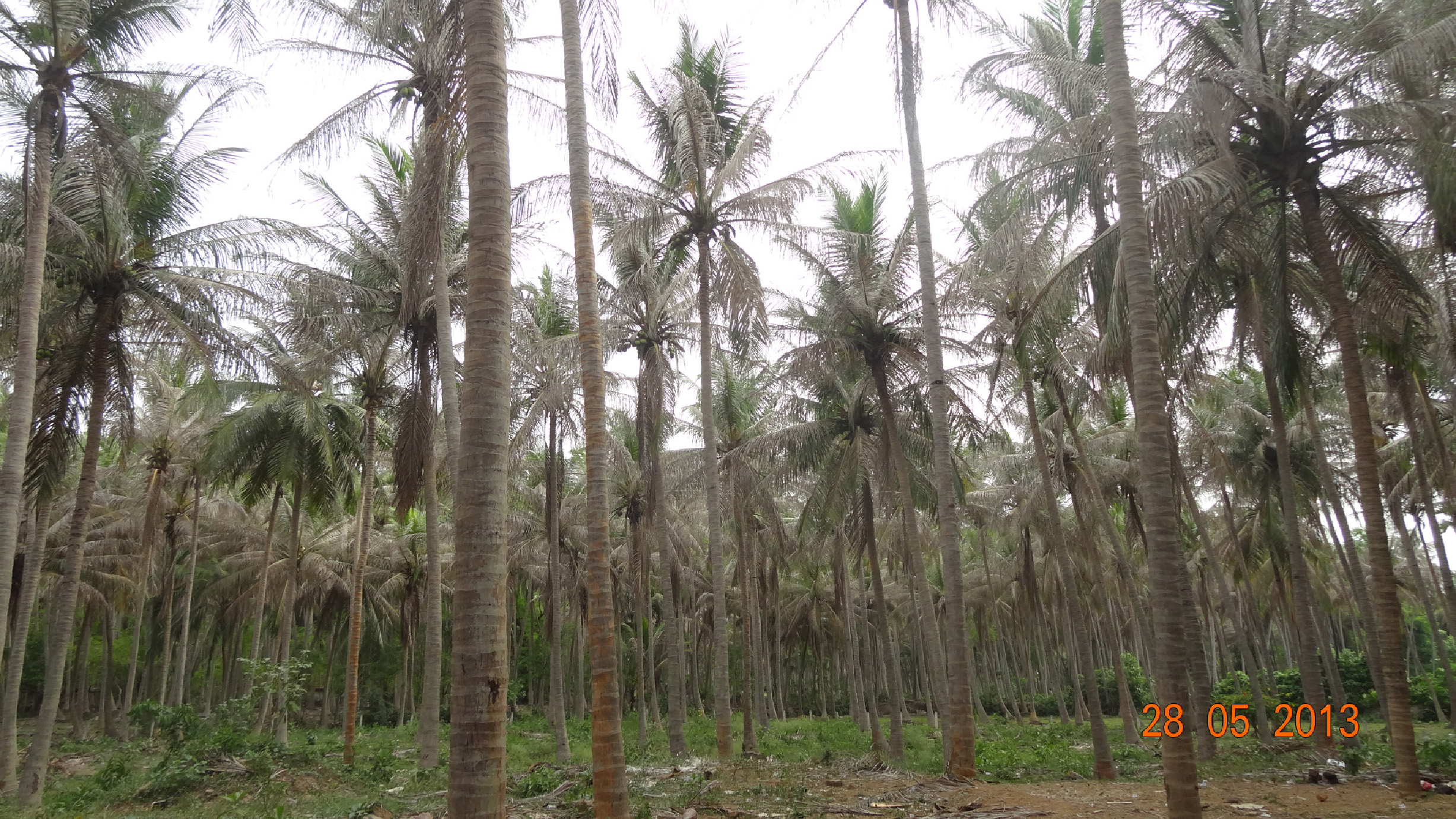 |
Coconut black headed affected coconut gardens | |
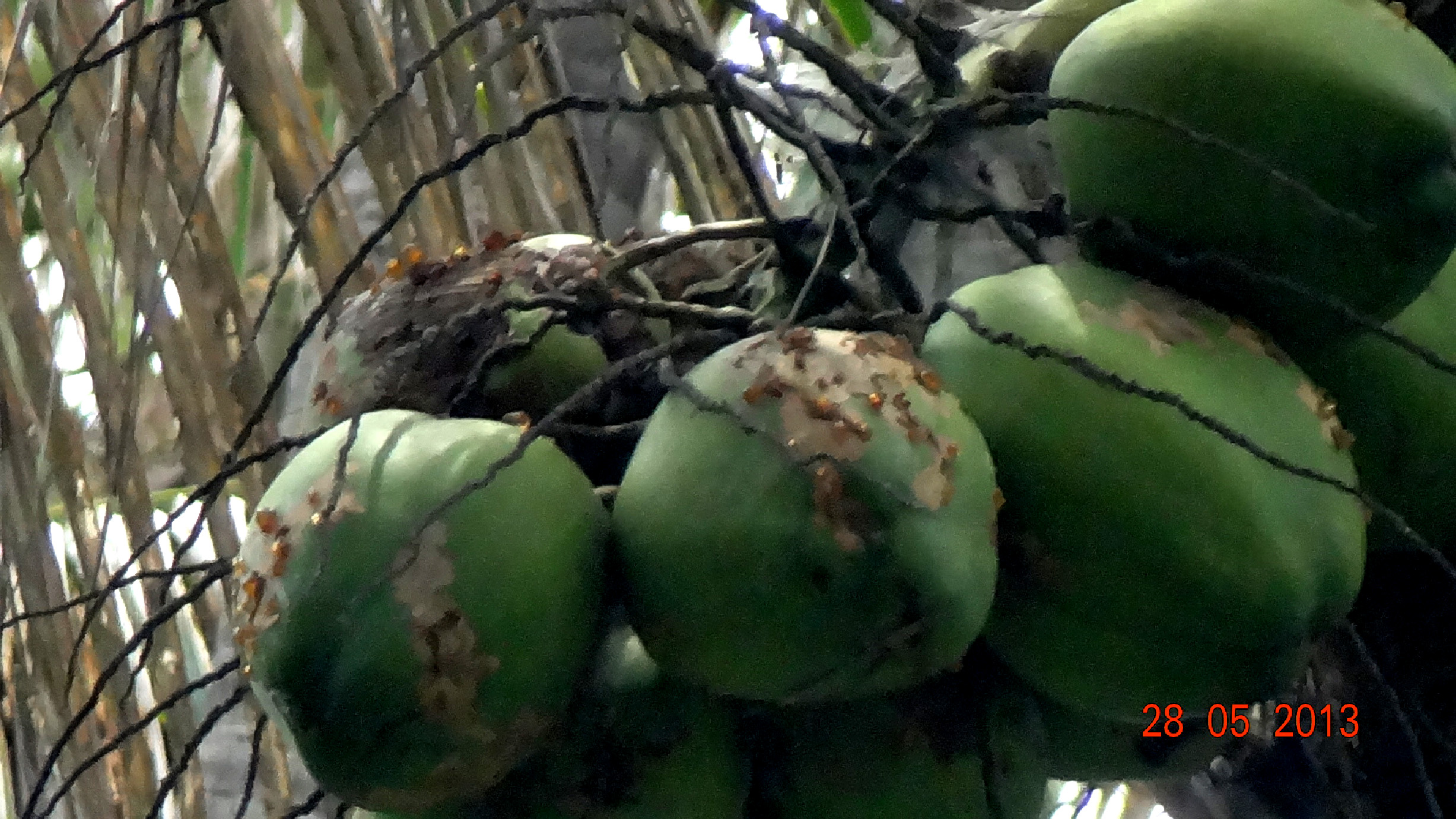 | 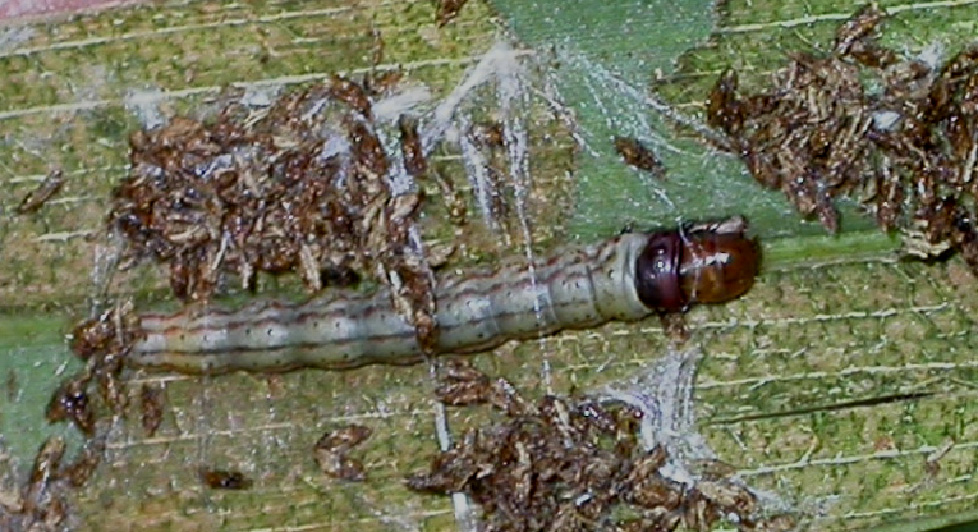 |
Coconut black headed caterpillar larva and its damage on nuts under outbreaks | |
- Regular incidence of coconut black headed caterpillar Opisina arenosella was observed in coastal districts of Andhra Pradesh. This pest was successfully managed through biological control. A total number of 62.21 lakh prasitoids were supplied during the last 10 years and an area of 10,678 ha of coconut black headed caterpillar affected gardens were covered (2013-14).
- A very severe out break of this caterpillar was recorded in 2011 and 2013 in East Godavari, West Godavari and Visakhapatnam districts and by release of bio agents Bracon hebetor and Goniozus nephantidis (7.00 lakhs), the pest was successfully managed. The farmers are very much impressed and convinced with the technology demonstrated in their fields.
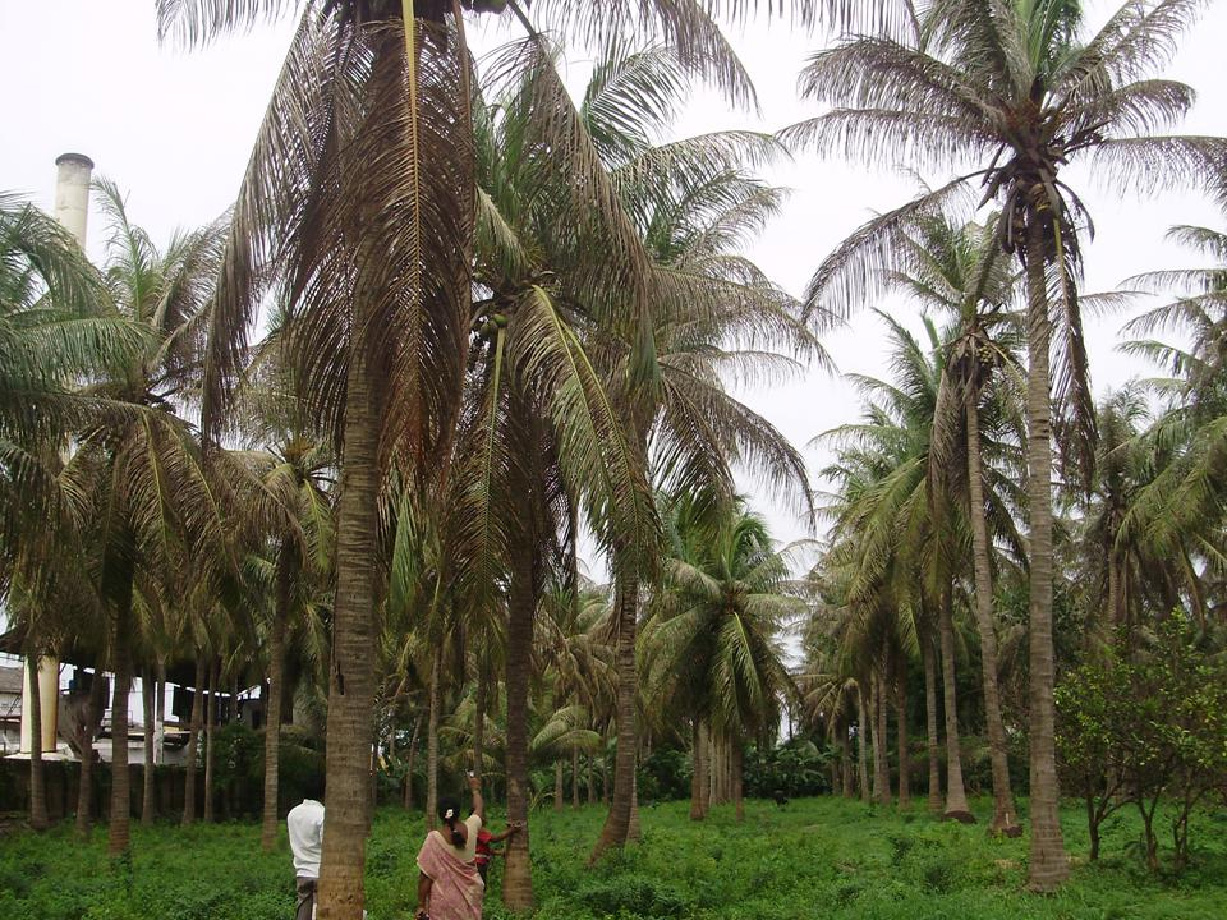 | 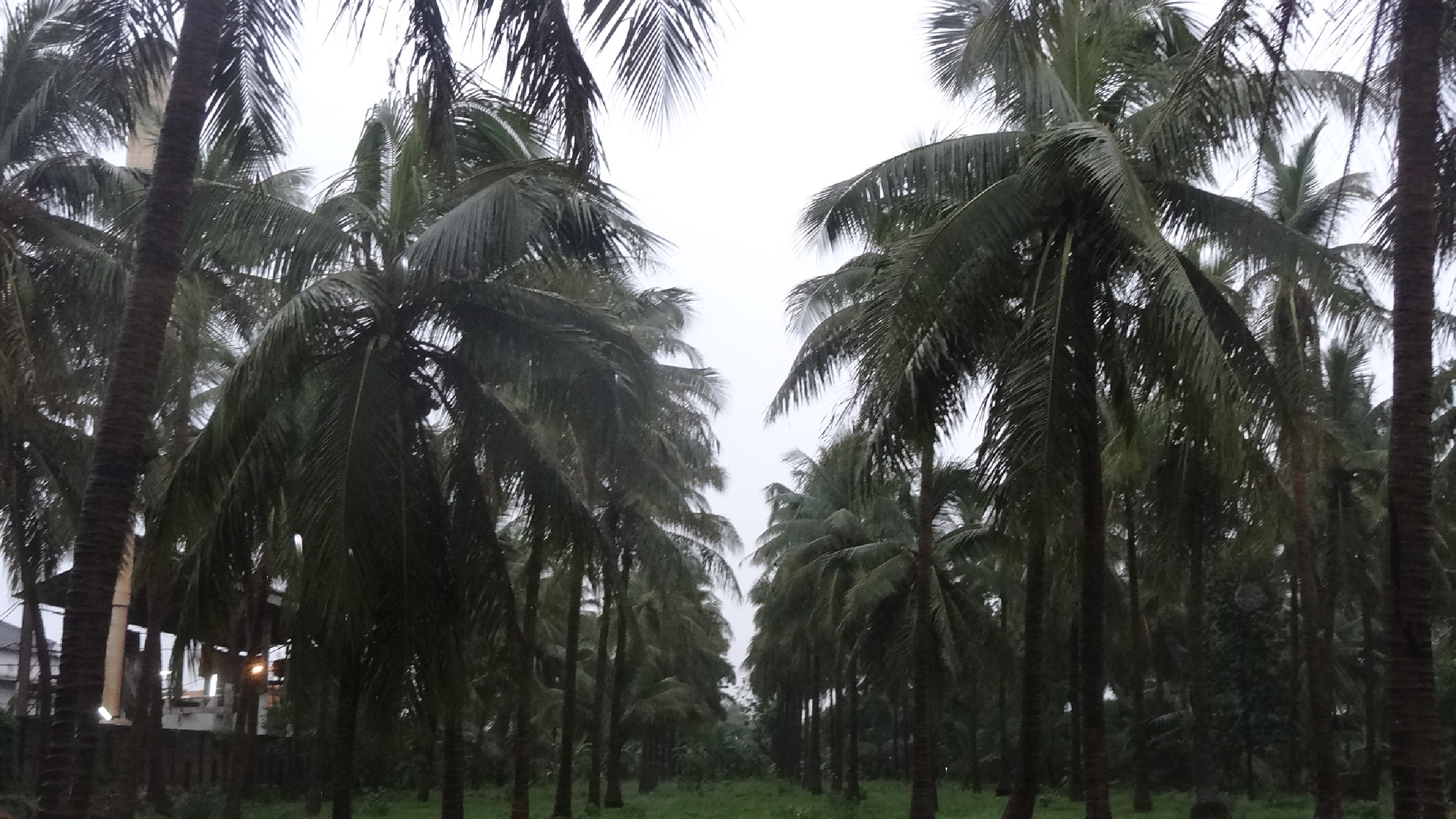 |
Coconut black headed caterpillar infested and recovered gardens after biological control intervention | |
- Root feeding of bio pesticide Azadiractin F5% @ 10 ml + 10 ml water and inundative release of larval parasitoids Bracon brevicornis, Goniozus nephantidis and pupal parasitoid, Trichospilus pupivora at recommended dose at 21 days interval for each treatment in two phases significantly reduced Cocont Blackheaded caterpillar. A technology for the management of coconut black headed caterpillar involving release of Bracon brevicornis @ 30 no./ tree or Goniozus nephantidis @ 20 no./ tree was standardized.
- Studies conducted at all three centres viz., Ambajipeta, Aliyarnagar and Ratnagiri on olfactory conditioning of parasitoids of coconut black headed caterpillar, O. arenosella by exposing them to the odor of larval frass and larval damaged leaves revealed that parasitisation levels of O. arenosella was found to be significantly more in conditioned parasitoid release treatment than in the unconditioned parasitoids release treatments . Hence , while releasing paraitoids against O. arenosella they should be invariably conditioned for 72 hours by exposing them to the exposed to odor of larval frass and larval damaged leaves of O. arenosella
Laboratory for mass production of coconut parasitoids
Mass multiplication and distribution of Bracon brevicornis and Goniozus nephantidis is being taken up in the AICRP labs for management of Black Headed Caterpillar
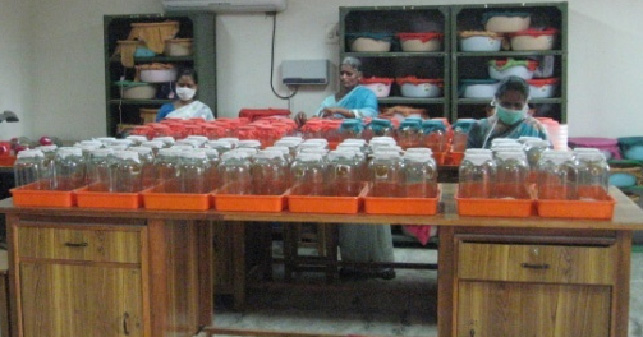 |  |
Mass rearing of parasitoids at Aliyarnagar centre | Mass rearing of parasitoids at Ambajipeta centre |
 | 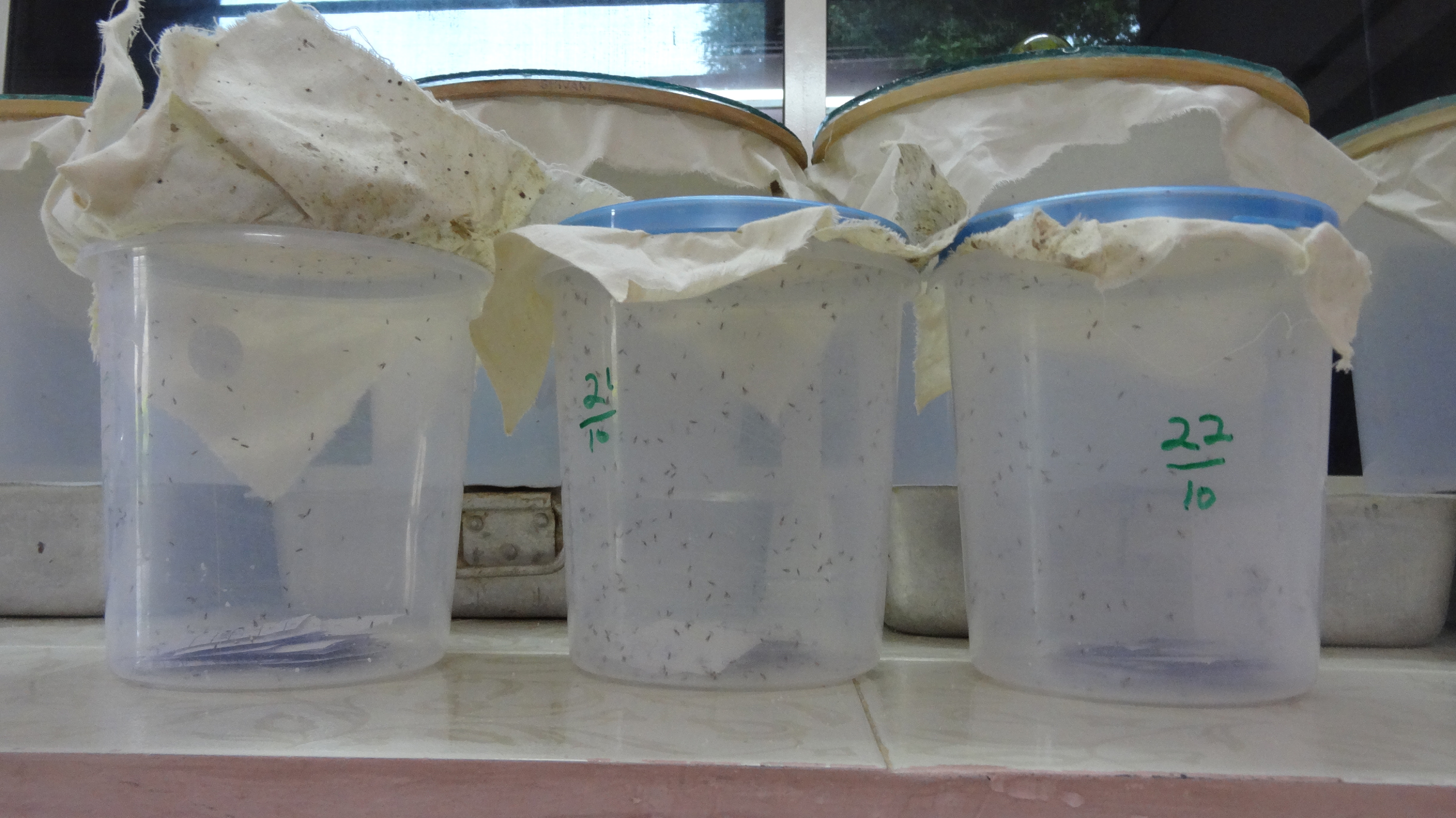 |
Goniozus nephantidis culture | Bracon brevicornis culture |
II. Rhinoceros beetle and Red palm weevil :
- Placement of aggregation synthetic pheromone traps viz., Rhino lure (without feeding stimulant) @ one / ha; Ferro lure @ one / ha with feeding attractant (Sugarcane molasses 2.5kg + 5 ml acetic acid +5gm yeast) attracted and captured more numbers of black beetles and red weevils of both sexes. Setting up of attractant traps (mud pots containing sugarcane molasses 2.5kg/toddy 2.5 l + acetic acid 5 ml + yeast 5 g + longitudinally split tender coconut stem/logs of green petiole of leaves of 30 numbers in one acre to trap adult red palm weevils in large numbers. Mud pots containing castor cake suspension (2.5 kg) + 5 ml acetic acid 5 gm yeast + longitudinally split tender green petioles of leaves of 30 numbers/acre to trap adult rhinoceros beetles in more numbers.
- An IPM technology involving setting of Rhinolure trap @ 1/ha, leaf axil placement of phorate granules or naphthalene balls, release of Baculovirus infected adults @ 15/ha and application of Meetarhizium anisopliae to manure pits has been standardized for the management of coconut rhinoceros beetle.
- Validation of integrated pest management strategies for Rhinoceros beetle was carried in farmer’s field (10 ha) and the technology was found effective and successful in the managing these pests.
- Pipe trap technique for rhinoceros beetle using rhinolure was tested and popularized
- Pheromone trapping of red palm weevil, rhinoceros beetle was popularized and was effectively taken up in the pests affected gardens in coastal districts of Andhra Pradesh.
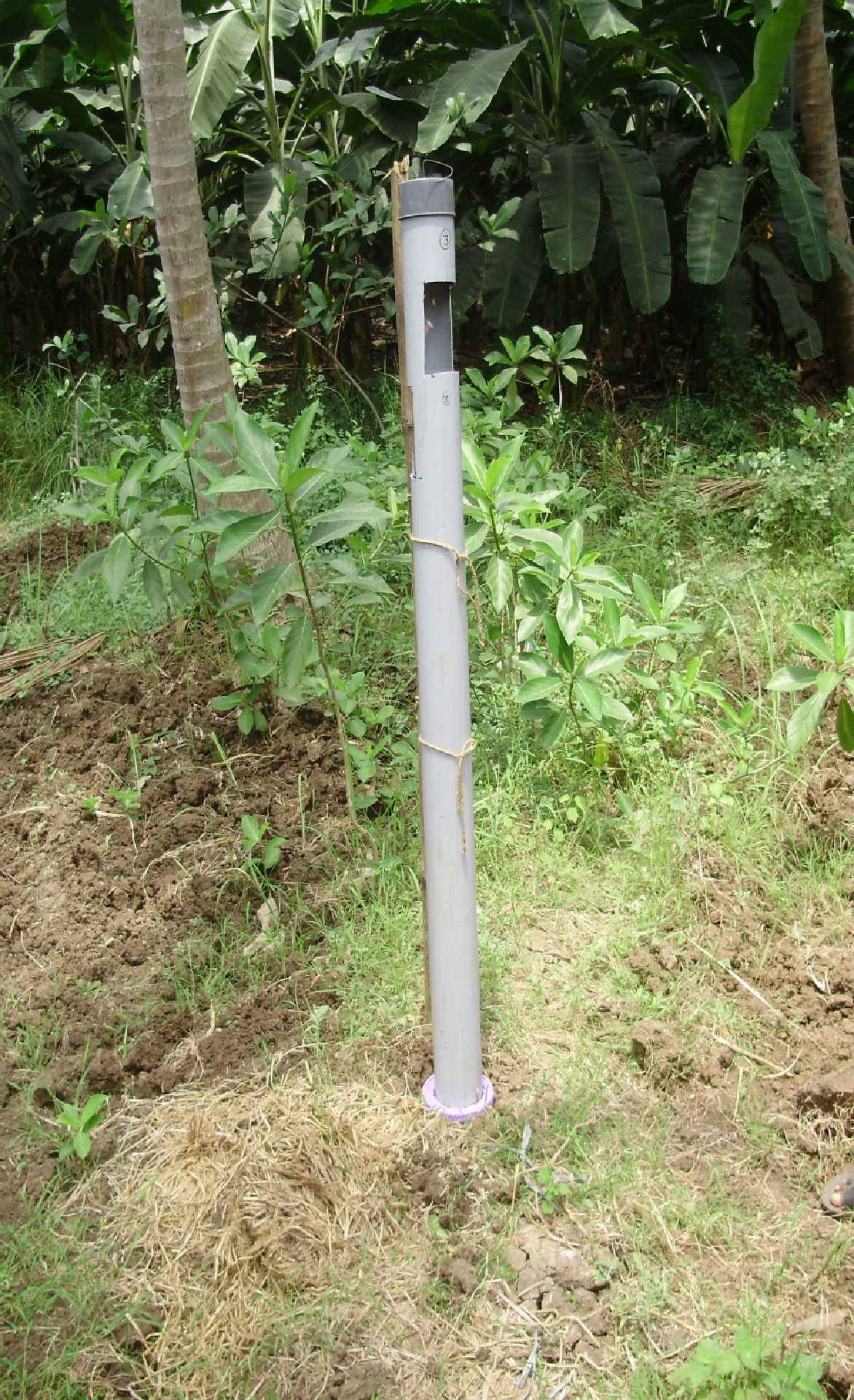 | 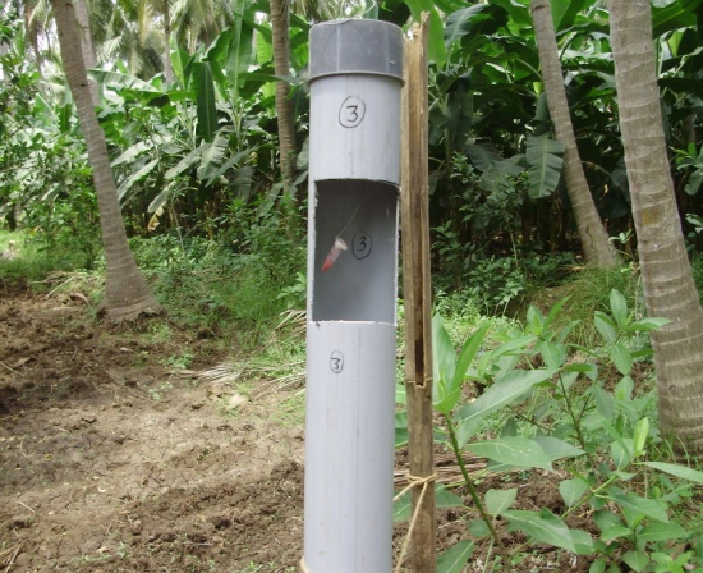 |
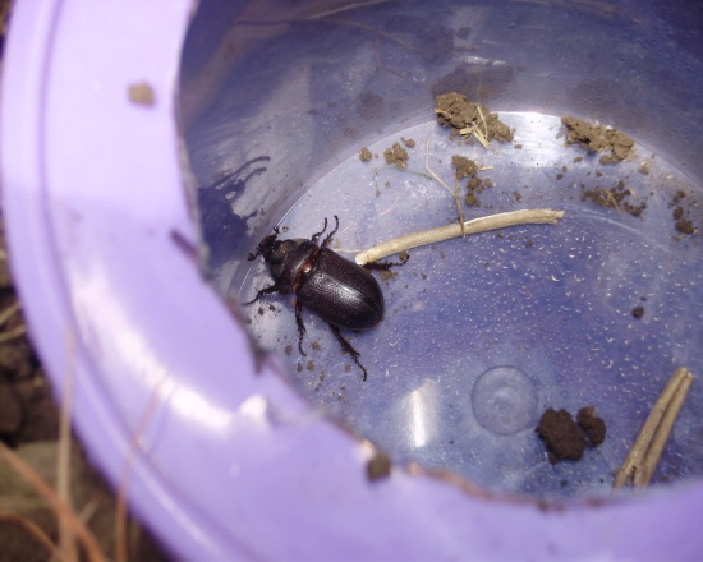 | |
Pipe trap technique for rhinoceros beetle | |
 | |
Bucket trap for rhinoceros beetle | |
III. Eriophyid mite
- Among the pests of coconut the coconut eriophyid mite, Aceria guerreronis Keifer is the most destructive pest and studies conducted on mite management revealed that nutritional management and phytosanitary measures have impact on mite incidence and intensity and the root feeding with Azadirachtin 10,000 ppm was also advocated as one of the ecofriendly approaches for mite management
- The validation studies conducted from on a large scale (100 palms of 0.5 ha acreage) in farmers garden in Korlapativaripalem village, East Godavari district , Andhra Pradesh, at Kottur Malayandipatnam, Anaimalai block, Coimbatore district and in in Karla village of Ratnagiri district revealed that Mild scale of mite incidence was noticed in INM and INM with azadirachtin (10ml+10 ml of water) along with low per cent of eriophyid mite infested nuts . There fore for eriophyid mite management Integrated nutrient management package ( phytosanitary measures , application of vermicompost, recommended dose of fertilizers , sunnhemp green manure crop in the coconut basins assuring required irrigation during summer months and soil moisture conversation) with and root feeding of Azadirachtin 10,000 ppm @ 10 ml + 10 ml water ( 3 times in a year April-May, September –October and February -March ) is advocated
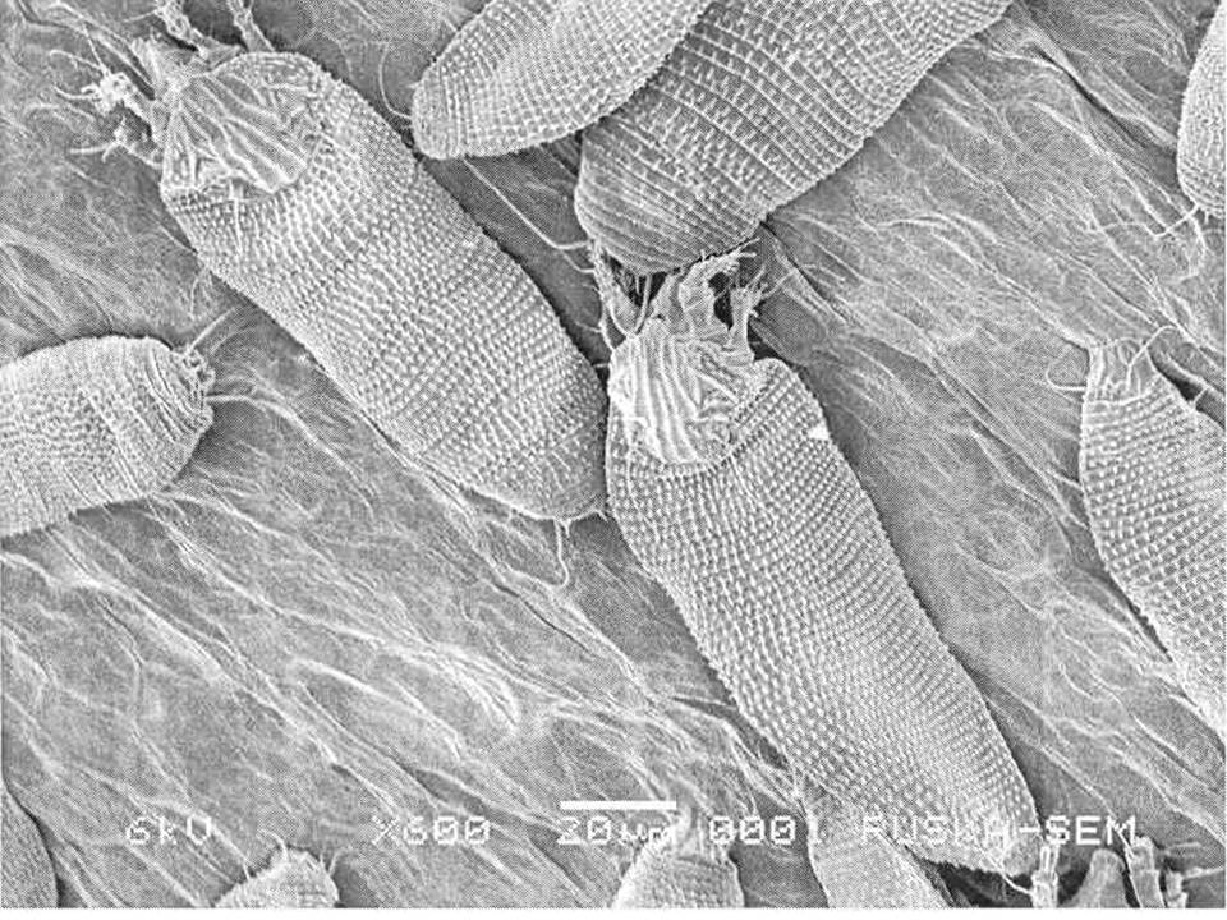 | 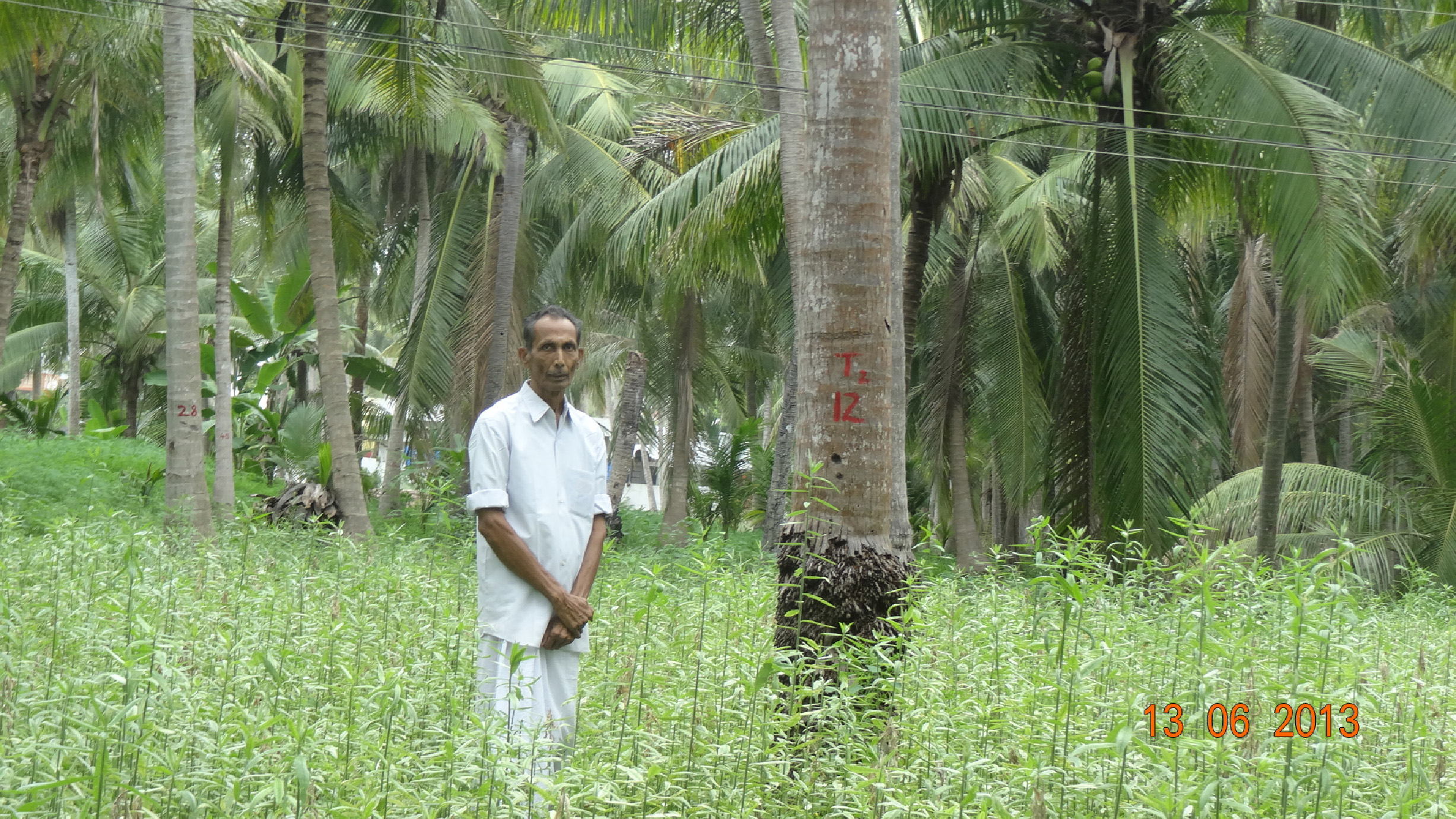 |
SEM photograph of eriophyid mite | Green manuring in coconut gardens |
IV. Coconut slug caterpillar
- The slug caterpillar is a sporadic out break pest on coconut and the larvae feeding on leaf lamina results in development of necrotic spots in early stage. In severe cases caterpillars feed on the coconut leaves sparing only the midrib, leaf stalks as well as nuts and in severe out break gumming on the nuts was also observed.
- The incidence of coconut slug caterpillar Contheyla rotunda on a severe scale in 2011-12 and on moderate scale in 2012-13 was observed in Aiyampalayam village in Tamil nadu.Out break of coconut slug caterpillar Macroplectna nararia was observed in 2007, 2012, 2013 in coconut gardens of East Godavari and West Godavari districts of Andhra Pradesh, light trap studies were initiated and results revealed that this sporadic pest can be successfully managed by installation of 200 W light traps installed at 1 ½ feet above ground with water pan@ 3 light traps /ha.
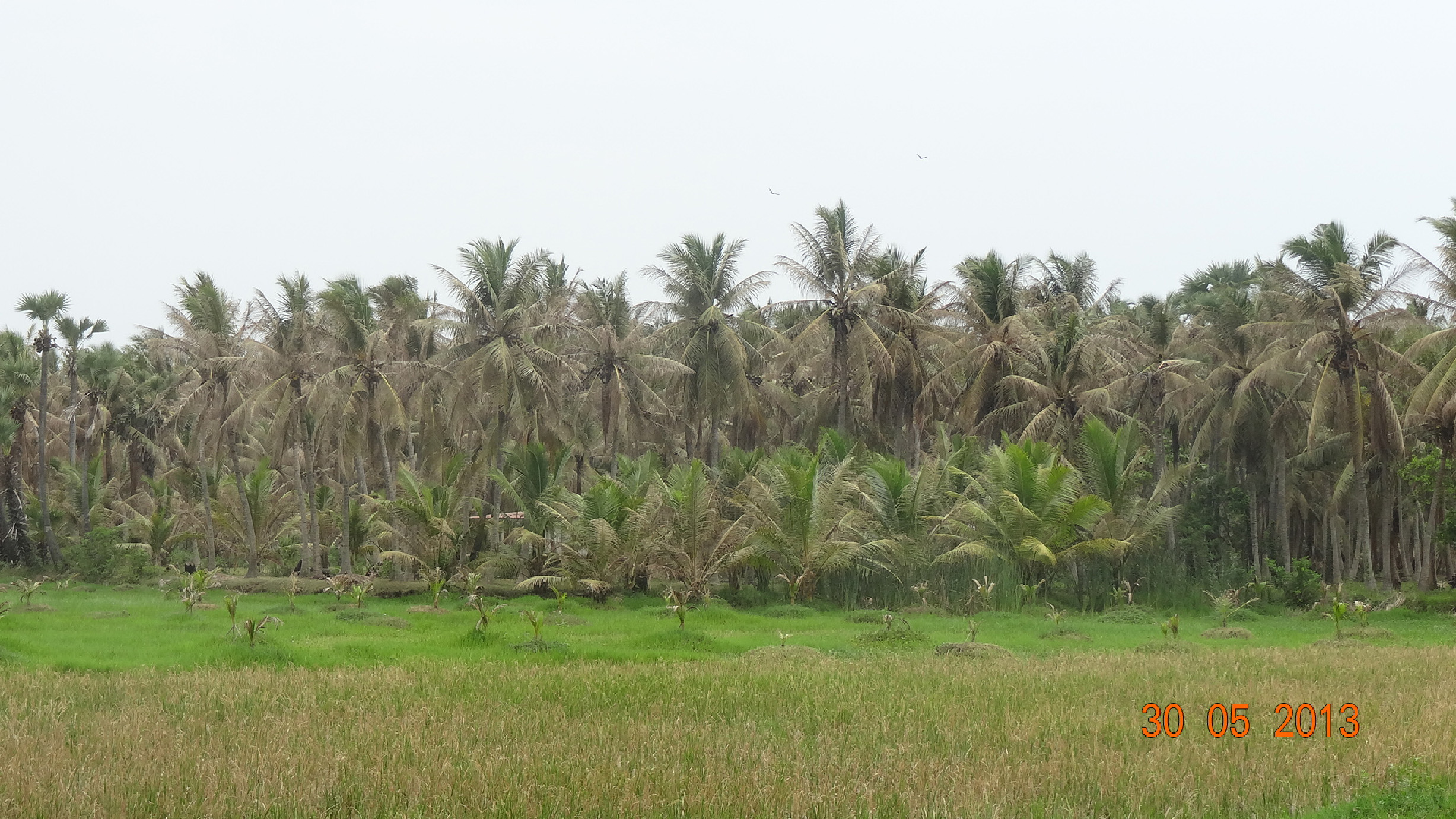 | 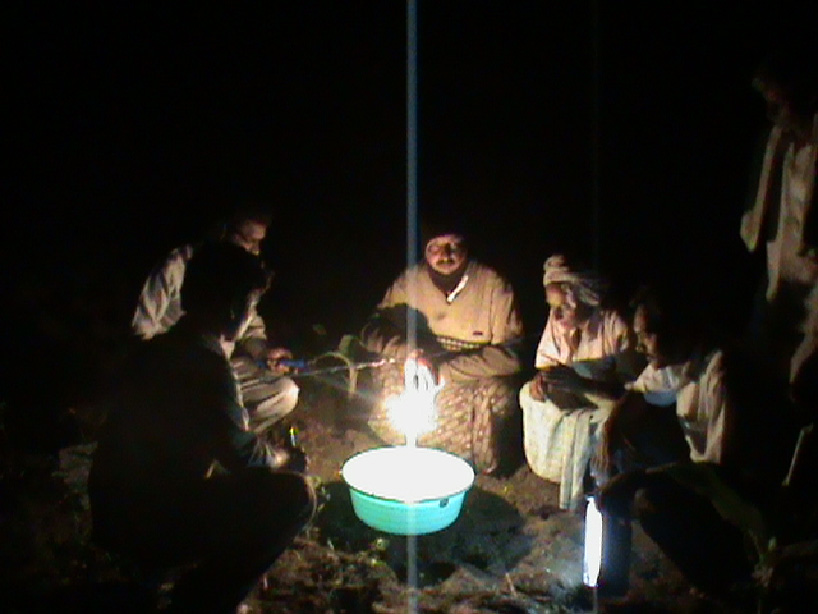 |
Slug caterpillar affected coconut gardens | Light traps for slug caterpillar management |
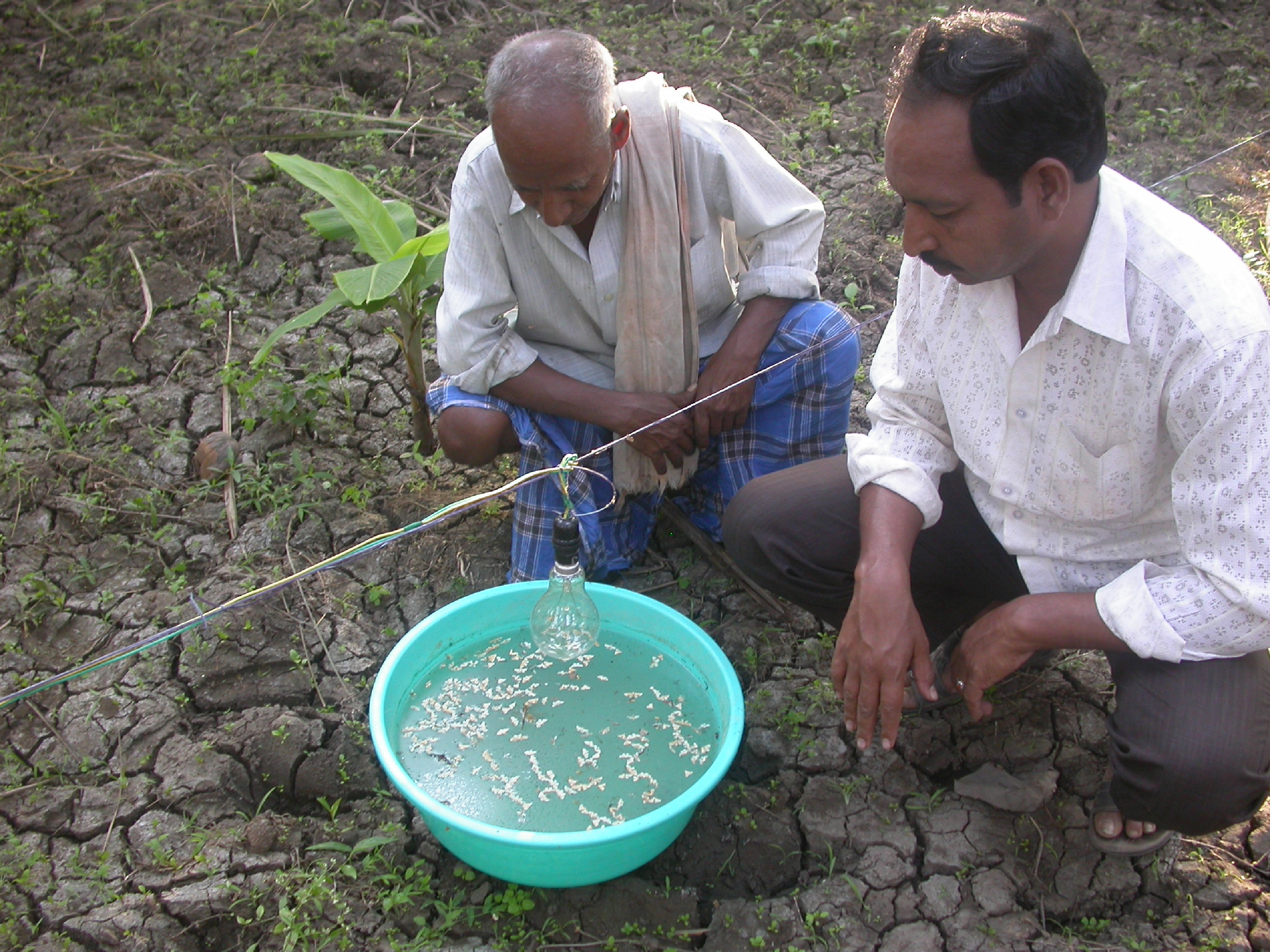 | |
Adult slug moths trapped in 200 W light trap installed at 1 ½ feet | |
- In the roving surveys carried out in 2012 in East Godavari district of Andhra Pradesh two new larval parasitoids Euplectrus sp and Euplectromorpha sp belonging to family Eulophidae (Hymenoptera) and a pupal parasitoid Eurytoma monemae and a entomopathogen Paecilomyces lilacinus (Thom) Samson were identified on coconut slug caterpillar Macroplectra nararia , and these parasitoids were found parasitizing slug caterpillar under field conditions effectively.
 |  |
Coconut slug caterpillar M. nararia infected by entomopathogen Paecilomyces lilacinus (Thom) Samson | Coconut slug pupal parasitoid Eurytoma monemae |
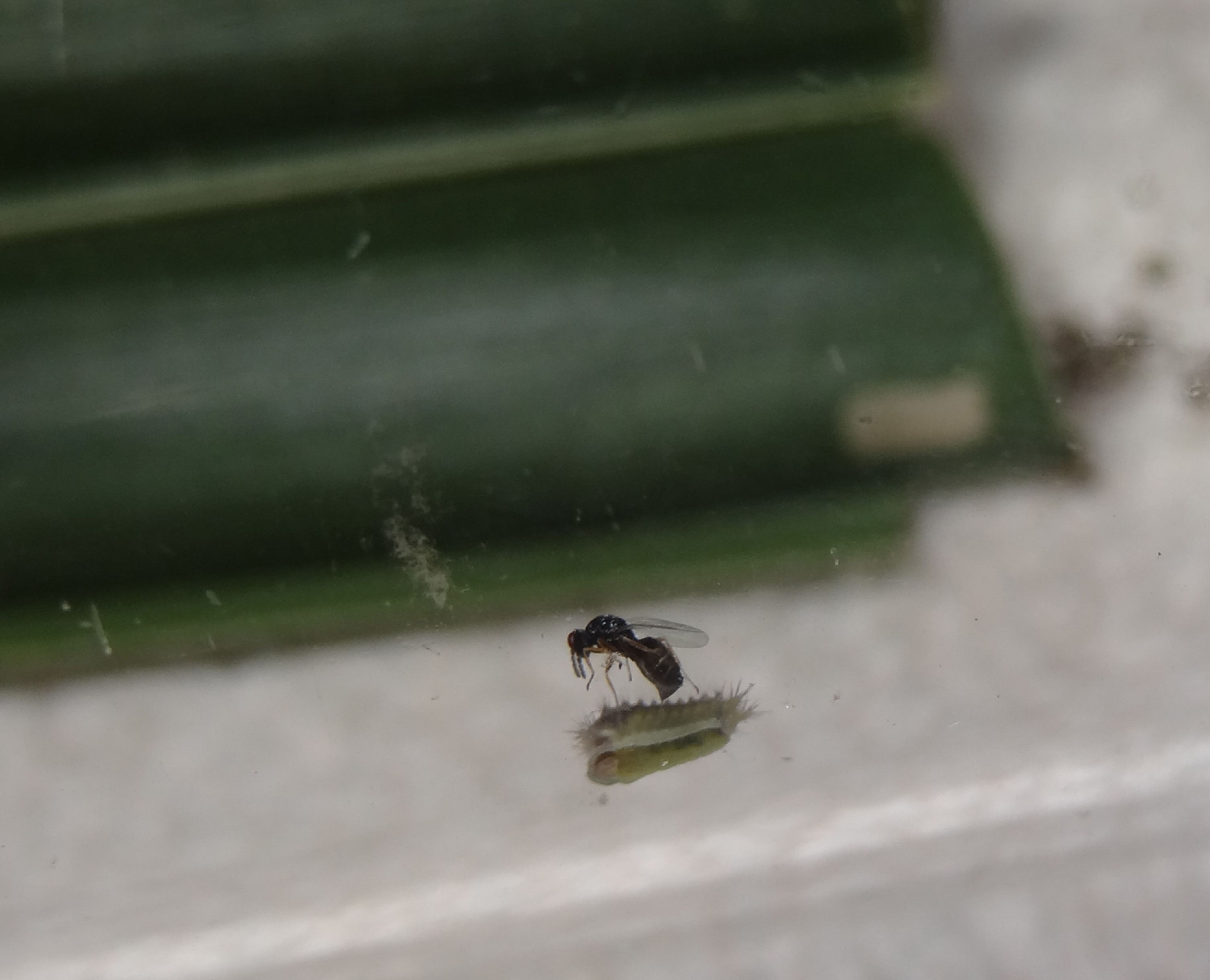 | 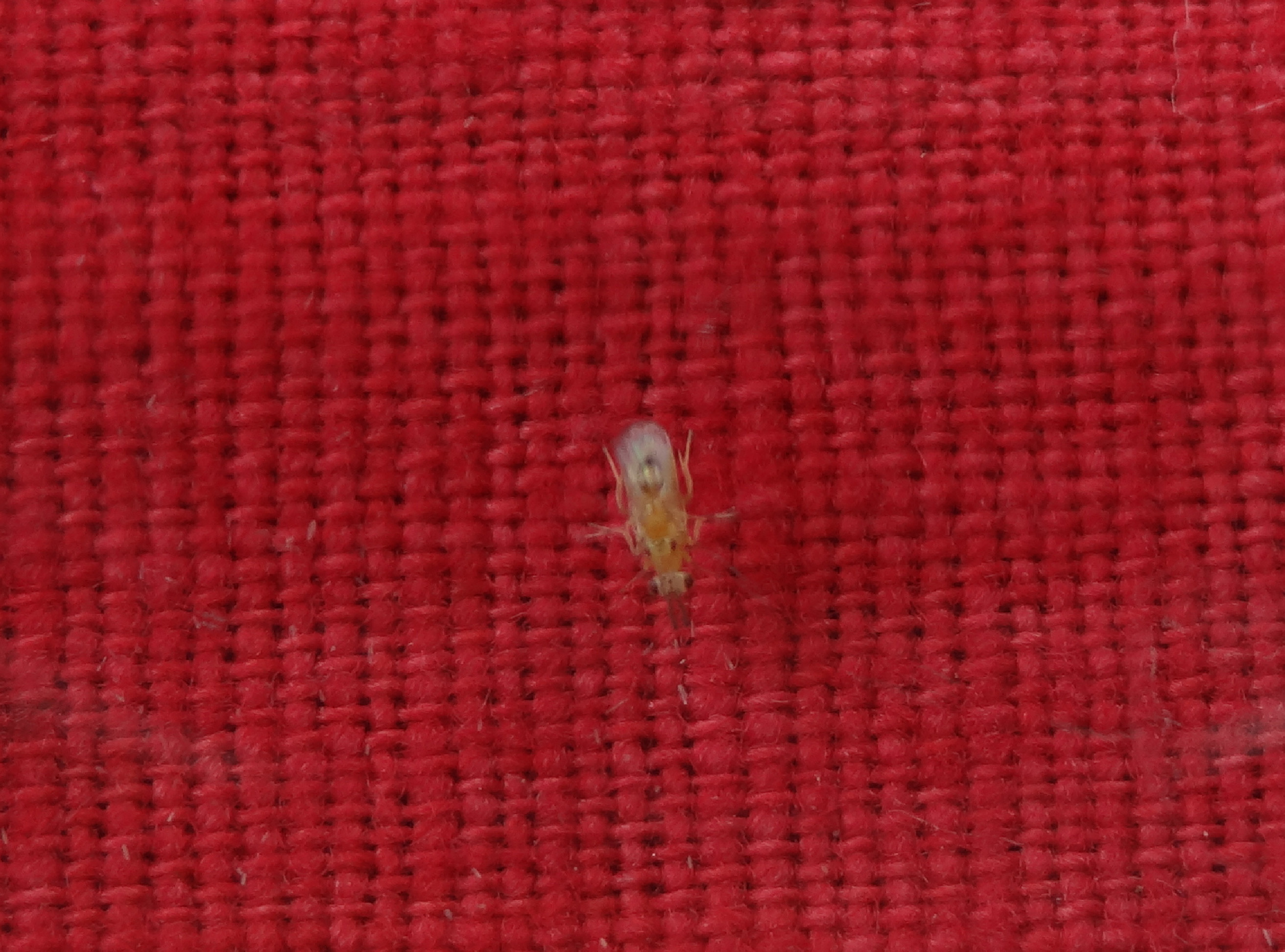 |
Slug caterpillar larval parasitoid Euplectrus sp | Slug caterpillar larval parasitoid Euplectromorpha sp |
